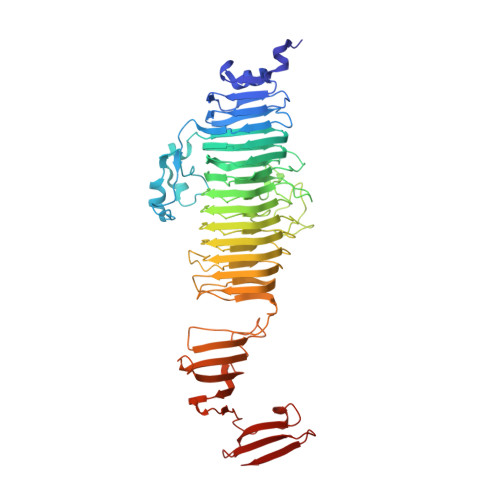Tail morphology controls DNA release in two Salmonella phages with one lipopolysaccharide receptor recognition system.
Andres, D., Roske, Y., Doering, C., Heinemann, U., Seckler, R., Barbirz, S.(2012) Mol Microbiol 83: 1244-1253
- PubMed: 22364412
- DOI: https://doi.org/10.1111/j.1365-2958.2012.08006.x
- Primary Citation of Related Structures:
3RIQ - PubMed Abstract:
Bacteriophages use specific tail proteins to recognize host cells. It is still not understood to molecular detail how the signal is transmitted over the tail to initiate infection. We have analysed in vitro DNA ejection in long-tailed siphovirus 9NA and short-tailed podovirus P22 upon incubation with Salmonella typhimurium lipopolysaccharide (LPS). We showed for the first time that LPS alone was sufficient to elicit DNA release from a siphovirus in vitro. Crystal structure analysis revealed that both phages use similar tailspike proteins for LPS recognition. Tailspike proteins hydrolyse LPS O antigen to position the phage on the cell surface. Thus we were able to compare in vitro DNA ejection processes from two phages with different morphologies with the same receptor under identical experimental conditions. Siphovirus 9NA ejected its DNA about 30 times faster than podovirus P22. DNA ejection is under control of the conformational opening of the particle and has a similar activation barrier in 9NA and P22. Our data suggest that tail morphology influences the efficiencies of particle opening given an identical initial receptor interaction event.
Organizational Affiliation:
Physikalische Biochemie, Universität Potsdam, Karl-Liebknecht-Str. 24-25, 14476 Potsdam, Germany.















